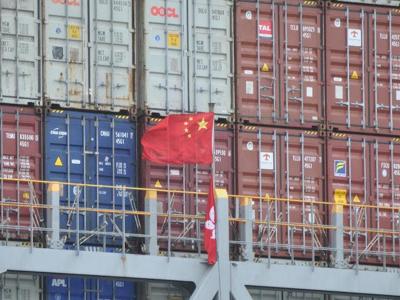Protectionist trade policies and the lack of an economic agenda for East and Southeast Asia have become central themes in critiques of US policy towards the region and its approach to managing US-China “strategic competition.”
According to these accounts, US protectionism undermines its economic draw in East Asia — and the political leverage stemming from it — at a time when it has already been eroded by rising reliance on Chinese trade, investment and regional institutions such as the Regional Comprehensive Economic Partnership (RCEP).
Instead, the US should employ open economic diplomacy, return to the Comprehensive and Progressive Agreement for Trans-Pacific Partnership (CPTPP) and allow for greater market access for exporters from the region.
From the US perspective, limiting economic openness towards China is necessary to protect its industrial base, lessen its import reliance in critical sectors and mitigate the potential for China to weaponize interdependence.
But export restrictions, punitive tariffs and industrial policies aimed at eroding the market share of Asian firms are perceived in East Asia as detrimental to the “rules-based international order” and East Asian prosperity.
Yet current US policies are no worse than those pursued in the past vis-a-vis emerging East Asian economies. Persistent US trade deficits with East Asia also ensure that it remains a highly important economic partner and security guarantor in the region.
The role of free trade agreements (FTAs) in fostering trade and investment flows in East Asia has been the subject of debate for decades. Critics of East Asian regionalism have long argued that “looser” integration pursued by ASEAN and its partners offers meager economic gains.
Recent empirical studies investigating the effects of regional FTAs present a mixed bag — FTAs tend to increase trade for less developed countries but have very marginal effects for middle- and high-income economies.
While the degree of liberalization under the CPTPP is much more significant, it is not a benevolent offer of “free” market access but a result of a hard bargain driven by the US. The Indo-Pacific Economic Framework (IPEF) is similarly aimed at promoting regulations that favor the United States.

But US-East Asia trade diplomacy has often focused on protecting narrowly defined US economic interests. Trade frictions with Japan in the 1980s, “voluntary restrictions” put on Taiwanese and South Korean semiconductor industries from the 1990s, the US approach to the regional solution of the Asian financial crisis and China’s contested WTO accession all attest to this.
Yet protectionism has also proven to be futile in the past. One reason for this is the robustness of China-centric regional production networks. US trade policy might weaken these, but it cannot significantly alter the economics supporting them and a US manufacturing renaissance remains highly unlikely. The potential for isolating China in manufacturing production networks is therefore limited.
Another reason has to do with consumption and savings patterns. The US will remain a key market for the region as long as it consumes more than it produces and saves very little, while East Asian economies do the opposite.
The Covid-19 pandemic reinforced this pattern as China reacted with supply-side measures promoting manufacturing, while the US raised consumption with demand-side policies. China ended up with a record trade surplus and the US with a record deficit. The image of a protectionist US and an open China does not match reality.
Still, the development strategies of many regional states hang on joining regional production networks. These largely operate to satisfy US and European demand using US, Japanese and European foreign direct investment inflows. RCEP and a China-centric regional system could only provide an alternative if it also provides more demand and capital.
But China presents contradictory signals. The long-standing aim to raise domestic consumption should provide market opportunities, but the notion of dual circulation suggests that the onus would be on satisfying it with domestic supply.
Participation in the value chains of Chinese technology companies would offer rewards for regional suppliers, yet China also professes technological self-reliance, clouding these prospects. Chinese funding is crucial for regional infrastructure development, yet projects often go awry and capital has recently dried up.
The implementation of these Chinese domestic policies will determine the future of East Asian economic architecture. If regional leaders expect the Chinese market to grow at a faster pace, the US position in the region would weaken immensely.

But the US could mitigate the loss of prestige — which stems from its perceived inattention to East Asian welfare — if it can convince the region that its markets will remain open for Asian exports and that its ambition to renegotiate the regional economic order is limited in scope and defensive in nature.
While domestic politics and national security considerations might prevent a return to CPTPP and limit the ambitions of IPEF, the US could also argue that limiting its exposure to China through ‘friend-shoring’ benefits the region.
OECD data on trade in value-added indicate that more than half of East Asian value-added in products consumed in the US is produced in China, while less than one-fifth of it comes from ASEAN. Tipping the scales in ASEAN’s favor could well allay fears of US economic disengagement from the region.
Dr Tamás Mészáros is a postdoctoral researcher at the Graduate School of Media and Governance, Keio University.
This article, republished with permission, was first published by East Asia Forum, which is based out of the Crawford School of Public Policy within the College of Asia and the Pacific at the Australian National University.

